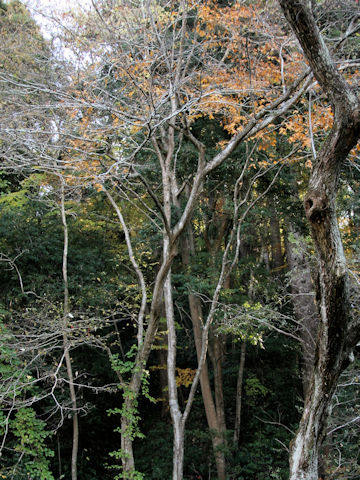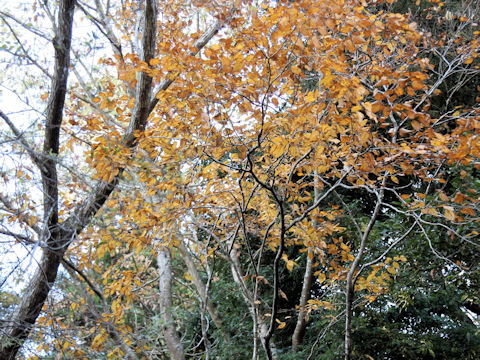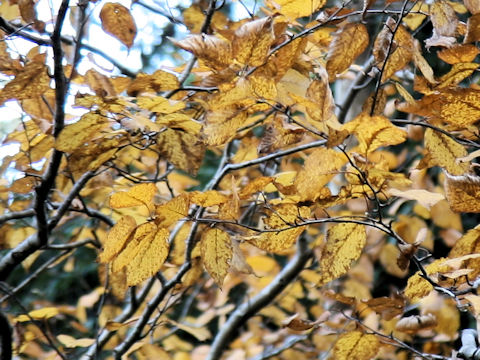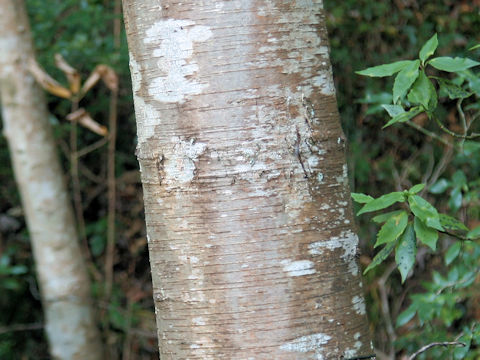
|
The Japanese cherry birch (Betula grossa) belongs to the Betulaceae (the Birch family). It is a tall deciduous tree that is distributed from Iwate Prefecture of Honshu southward to Shikoku and Kyushu in Japan. It grows on hillsides and mountains, reaching 15 to 25 m in height. It is the largest tree in the Birch family. The bark is grayish brown to dark brown, smooth, and has long horizontal lenticels similar to those of the cherry tree. When the bark is cut, a watery sap comes out, which smells like methyl salicylate. The leaves are ovate with pointed tips and sharp biserrations on the edges. It is monoecious and flowers from April to May, at the same time as the leaves develop. The male inflorescences hang down at the ends of the branches, and the female inflorescences are cylindrical and erect at the ends of the short branches. The fruit is an elliptic strobile, which is borne upward. The branches are highly resilient and have been used since ancient times to make "azusa-yumi" used by priestesses in ceremonies. The wood is of good quality and finish, and is used for building materials, furniture, utensils, lacquerware wood, and shoe molds.
|



